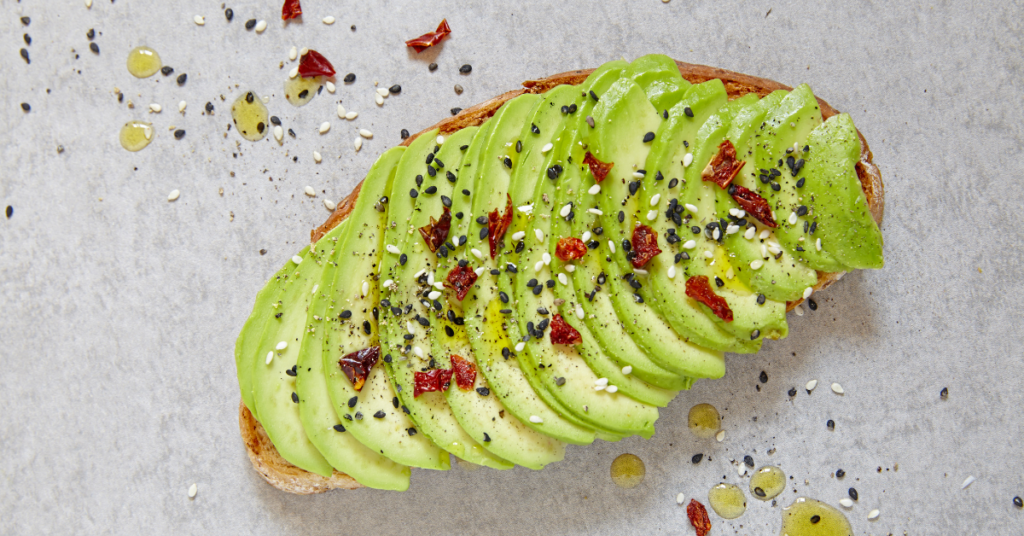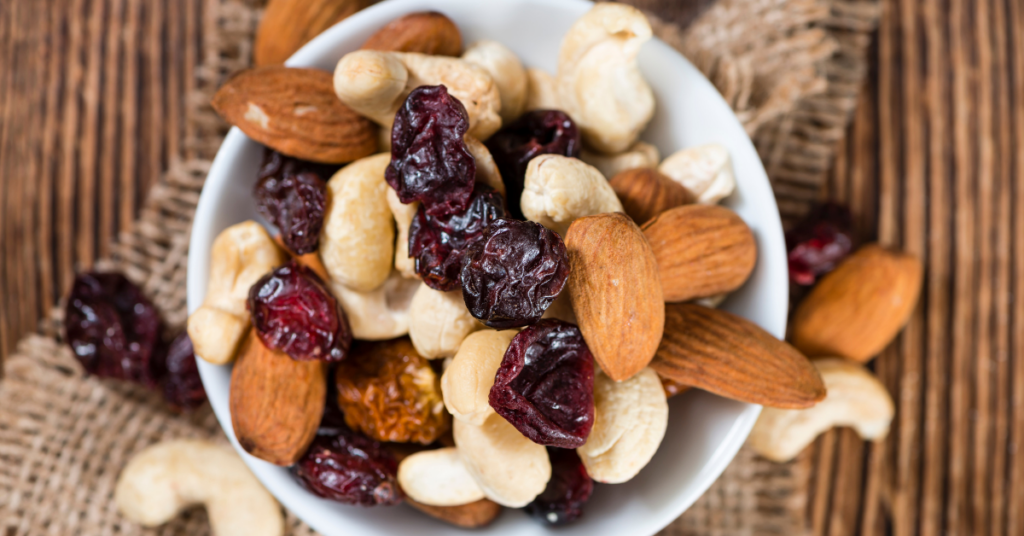Article at a Glance:
- Many people report an association between dairy consumption and their skin breaking out.
- One reason for this is the gut-skin connection and how dairy products affect your microbiome.
- Fortunately, there are plenty of plant-based dairy alternatives.
Still battling breakouts despite a solid skincare routine? The real trigger might be hiding in your smoothie or morning latte. Yep — that whey protein shake or daily dose of dairy could be sabotaging your skin from the inside out. Here’s how it fuels inflammation, disrupts hormones, and worsens acne.
The health of your skin—its glow or lack thereof—is closely tied to your gut health and, ultimately, your diet. While it’s well known that greasy, fried foods and high-sugar diets can contribute to breakouts and a dull complexion, a lesser-known culprit is dairy and whey protein.
Whey is one of the two primary proteins found in milk (along with casein). During dairy processing, liquid whey is separated, dried, and turned into the whey protein powder commonly found in health food stores. Emerging research suggests that dairy and whey may worsen skin issues like acne by disrupting gut health and triggering inflammation.
In this article, we’ll explore the gut-skin connection, examine the impact of dairy and whey on acne, and discuss dietary adjustments that may help improve your skin.
How Diet and Gut Health Impact the Skin
The gut-skin connection plays a significant role in overall skin health. Research suggests that imbalances in gut bacteria may contribute to conditions like acne, psoriasis, eczema, and rosacea. When the gut microbiome is disrupted (gut dysbiosis), it can lead to systemic inflammation, which may worsen these skin issues.
Poor gut health can also increase sebum (oil) production and clog pores, creating an environment for breakouts. Certain foods, particularly dairy and whey protein, may contribute to acne by triggering inflammation in those sensitive to dairy. Additionally, whey protein can raise insulin-like growth factor-1 (IGF-1) levels, which further stimulates oil production and may worsen acne.
Understanding the Dairy-Skin Connection
Dairy, including whey protein, can directly affect gut health, which in turn influences skin health. It contains natural hormones and bioactive compounds that play a role in the gut-skin connection, potentially triggering inflammation and breakouts. Even organic or hormone-free dairy contains naturally occurring compounds that may impact the skin. Below is an overview of the hormones found in dairy and how they can impact skin health.
- Insulin-like Growth Factor-1 (IGF-1): Naturally present in milk and also stimulated in the body when you consume dairy. This hormone increases sebum (oil) production, which may clog pores and lead to acne. IGF-1 has specifically been linked to hormonal acne on the chin and jawline. High levels of IGF-1 may also contribute to leaky gut, which compromises the gut lining, allowing harmful substances to leak out of the gut and into the bloodstream triggering systemic inflammation.
- Insulin: Milk and whey protein can spike insulin levels. Elevated insulin levels can increase IGF-1, exacerbating acne and other skin problems. Insulin spikes can also negatively impact gut health, potentially leading to gut dysbiosis. Gut dysbiosis can contribute to inflammation in the body.
- Estrogen & progesterone: Dairy naturally contains estrogen and progesterone from cows. Consuming dairy may throw off the balance of these hormones in the body, as well as increase oil production, which can contribute to hormonal breakouts.
- Cortisol: Cows naturally produce cortisol, which can remain in the dairy products you consume. High cortisol levels can increase gut permeability and is also linked to inflammation, which can worsen acne.
Who is Most Affected?
Not everyone will experience acne and skin issues when consuming dairy products, but certain individuals may be more susceptible.
- Individuals with dairy sensitivities or intolerances: Those who experience lactose intolerance or sensitivity to whey or casein in dairy products can experience inflammation, which can affect skin health.
- Individuals prone to hormonal acne: People who already tend to experience hormonal acne, particularly around their jawline and chin, may be more susceptible to the impact that dairy can have on skin, increasing Insulin-like Growth Factor-1 (IGF-1), which increases oil production.
- Individuals with gut imbalances: there is a gut-skin connection and when the gut is out of balance, which can be exacerbated by the intake of dairy products, this can negatively impact the skin.
- Gym-goers and athletes who consume a lot of whey protein: Since whey protein can spike insulin and increase IGF-1, individuals who regularly consume whey may experience skin breakouts.
Alternatives to Dairy and Whey Protein
The good news is that if you’re worried about dairy affecting your skin, there are plenty of alternatives available. You can still enjoy your favorite recipes and protein smoothies without compromising your skin health.
- Plant-Based Milk Options: Almond, oat, cashew, soy, pea, macadamia, or coconut milk.
- Non-Dairy Protein Powders: Pea, hemp, brown rice, pumpkin seed, and collagen.
- Whole Food Protein Sources: Eggs, legumes, nuts, seeds, and lean meats.
LiveComplete Takeaways
Research on the gut-skin connection is rapidly growing, revealing the critical role diet plays in skin health. For some individuals, consuming dairy—especially whey protein—can negatively impact gut health and raise insulin-like growth factor-1 (IGF-1). This may contribute to the development of skin conditions such as acne, eczema, psoriasis, or rosacea. While dairy doesn’t affect everyone in the same way, it’s always a good idea to consult with your dermatologist if you’re experiencing skin concerns.
Sources
- Aghasi M, Golzarand M, Shab-Bidar S, Aminianfar A, Omidian M, Taheri F. (2019) Dairy intake and acne development: A meta-analysis of observational studies. https://pubmed.ncbi.nlm.nih.gov/29778512/
- De Pessemier, B.; Grine, L.; Debaere, M.; Maes, A.; Paetzold, B.; Callewaert, C. (2021) Gut–Skin Axis: Current Knowledge of the Interrelationship between Microbial Dysbiosis and Skin Conditions. Microorganisms, 9, 353. https://doi.org/10.3390/microorganisms9020353 https://www.mdpi.com/2076-2607/9/2/353?
- Ellis, S.R.; Nguyen, M.; Vaughn, A.R.; Notay, M.; Burney, W.A.; Sandhu, S.; Sivamani, R.K. (2019) The Skin and Gut Microbiome and Its Role in Common Dermatologic Conditions. Microorganisms, 7, 550. https://doi.org/10.3390/microorganisms7110550
- Salem I, Ramser A, Isham N and Ghannoum MA (2018) The Gut Microbiome as a Major Regulator of the Gut-Skin Axis. Front. Microbiol. 9:1459. doi: 10.3389/fmicb.2018.01459 https://www.frontiersin.org/journals/microbiology/articles/10.3389/fmicb.2018.01459/full?
- Thangamuni A, Fathimathul Harshiba H, Muhammed Rafi N, Nitol A, Mohan J, Korrapati N. Beauty from within: A comprehensive review on interplay between gut health and skin. CosmoDerma. 2024;4:97. doi: 10.25259/CSDM_73_2024 https://cosmoderma.org/beauty-from-within-a-comprehensive-review-on-interplay-between-gut-health-and-skin/
- Muhaidat, J., Qablan, A., Gharaibeh, F., H. Albataineh, G., Abdo, N., , Alshiyab, D., Al-Qarqaz, F. (2024). The Effect of Whey Protein Supplements on Acne Vulgaris among Male Adolescents and Young Adults: A Case-Control Study from North of Jordan, https://doi.org/10.1155/2024/2158229



